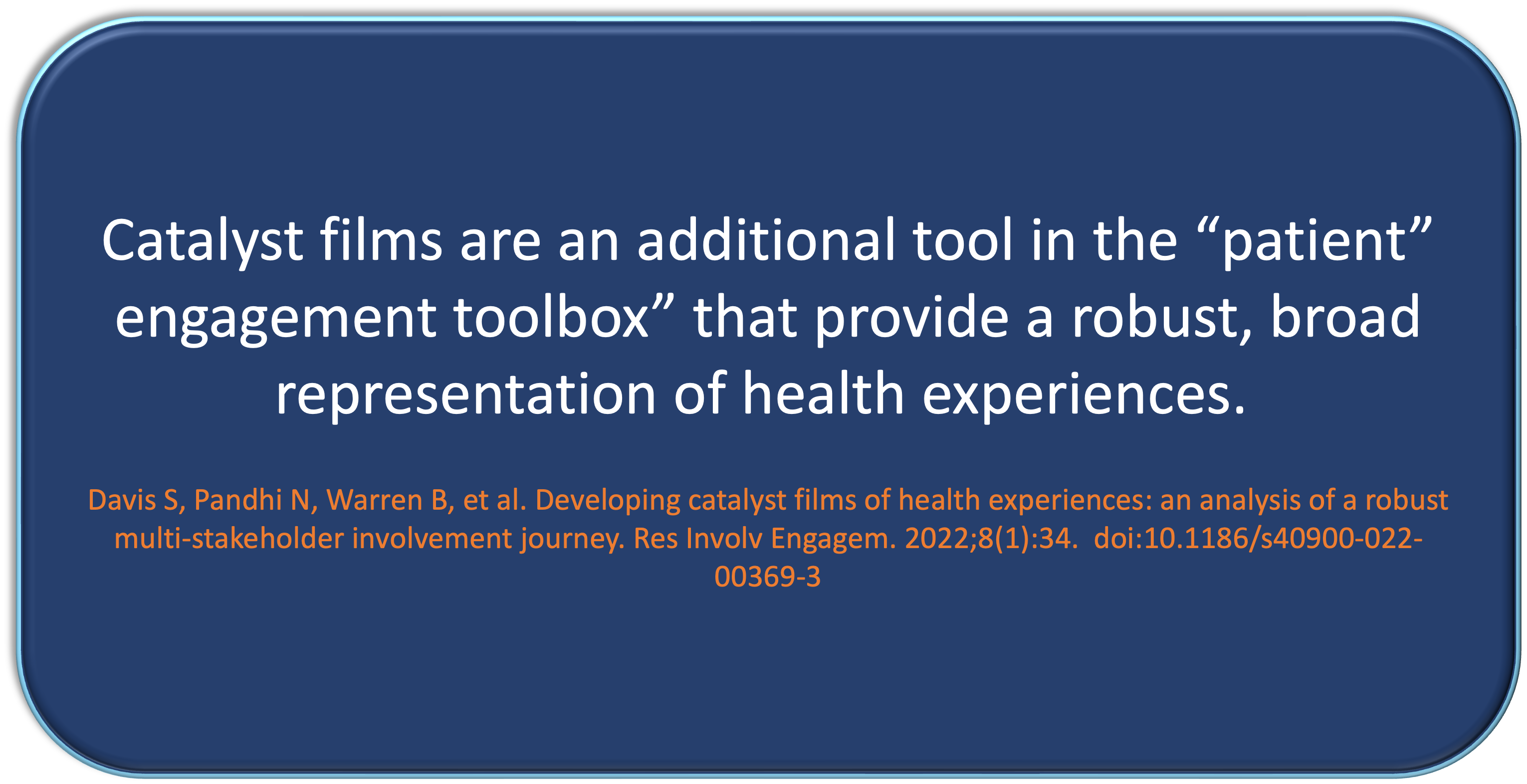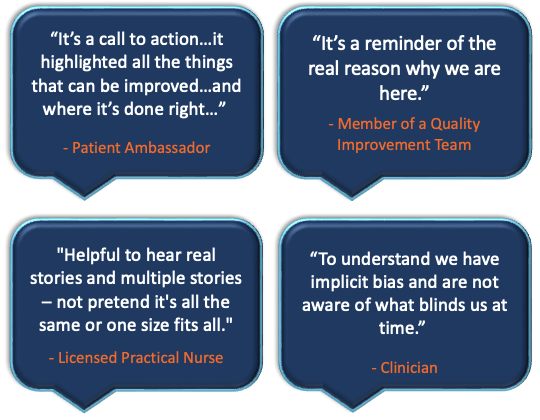Overview
About catalyst films
Catalyst films are short films comprised of rigorously-analyzed interview data from patients about their diverse experiences with health and health care. These films are intended to spark conversation with a range of audiences including patients, families, consumers, health care professionals, educators, policy makers and researchers about how to improve health care experiences. These films are created and designed to ensure there is adequate, meaningful, and active representation of patient voices and experiences in quality improvement, policy or education processes.

We held focus groups with primary care clinicians and clinic staff in Madison, WI and Albuquerque, NM about the experience of watching catalyst films. Perspectives voiced in these groups matched what has been reported in other studies (Bates 2007, Donetto, 2014; Locock, 2014b; Dimopoulos-Bick, 2018).

Using catalyst films
Catalyst films have historically been created and used as part of an Experience-Based Co-Design (EBCD) or Accelerated Experience-Based Co-Design (AEBCD) (Locock, 2014) in the United Kingdom and other countries. They were included in these design processes to ensure representation of health experiences and ignite conversation and action with stakeholders engaged together in the redesign of systems. EBCD and ABCD are not widely used in the United States. Catalyst films can also be developed outside of (A)EBCD and used for a variety of reasons, including:
- Learning more about a certain topic
- Teaching health professional students or clinicians
- Improving healthcare quality
- Informing policy change
- Reinforcing values, beliefs, and culture in care organizations
- Identifying areas for developing interventions

